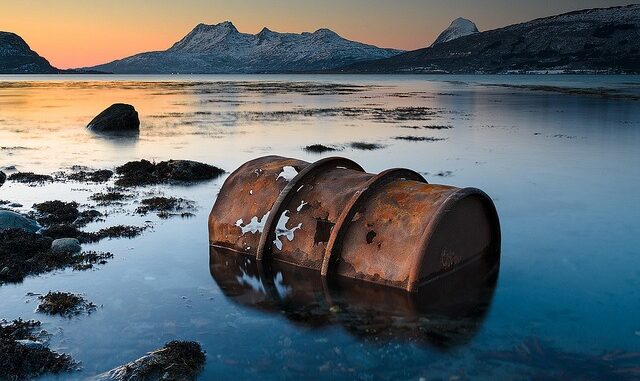
Potential Hazards: Emergency Response for Furnace Oil
Health
Emergency Response for Furnace Oil are listed below:
- When contact with material or/and inhalation it may cause irritation and skin/eye burn.
- Fire reaction may release corrosive/toxic gases, it may cause irritation and skin/eye burn or/and explosion.
- Vapors may cause dizziness or suffocation.
- Extinguishing method of Fire may cause inadvertently lead to environmental contamination.
Fire and Explosion Hazards
Formation of Explosive Mixtures: Flammable vapors can combine with air to create explosive atmospheres, posing significant risks in both open and confined spaces.
Flashback Potential: Vapors may travel considerable distances to an ignition source and flash back to the original spill location, leading to fires or explosions.
Vapor Density and Accumulation: Many flammable vapors are heavier than air, causing them to settle and accumulate in low-lying areas such as basements, sewers, and tanks, increasing explosion risks.
Explosion Hazards in Various Environments: Accumulated vapors can lead to explosions indoors, outdoors, or within sewer systems if ignited.
Runoff Risks: Spilled flammable liquids can enter drainage systems, creating fire or explosion hazards within sewers.
Spill or Leak: Emergency Response for Furnace Oil
Small Spill
Eliminate Ignition Sources:
Immediately extinguish all potential ignition sources in the vicinity, including open flames, sparks, and electrical equipment. All equipment used must be grounded.
Ground Handling Equipment:
Ensure that all equipment used during the cleanup is properly grounded to prevent static electricity buildup, which could ignite flammable vapors.
Avoid Direct Contact:
Do not touch and walk on the spilled liquid or material. Flammable liquids can be hazardous upon contact, and walking through the spill can spread the contamination.
Stop the Source if Safe:
If it can be done without risk, stop the leak at its source to prevent further spillage.
Prevent Environmental Entry:
Take measures to prevent the spilled material from entering waterways, sewers, basements, or confined areas, as this can lead to fire or explosion hazards.
Use Foam to Suppress Vapors:
Applying foam can help suppress flammable vapors, reducing the risk of ignition.
Absorb the Spill:
Cover the spill with dry earth, sand, or another non-combustible absorbent material.
Collect and Contain Waste:
Use clean, non-sparking tools to collect the absorbed material. Place it into appropriate containers for disposal according to your facility’s hazardous waste management procedures.
Large Spill
- Make a Dike or contain liquid spill for later disposal.
- Reduce vapor through Water spray.
FIRST AID: Emergency Response for Furnace Oil
- Move victim to fresh air environment.
- Call Hot line or medical service.
- Give artificial respiration or Administer oxygen, if required.
- Remove contamination from skin/eye and clothing/shoes or change if required.
- In case of burns, immediately cool affected parts of body for as long as possible with cool (not cold) water.
- Don’t remove clothing if stick to skin and Keep victim warm and quiet.
- Ensure First Aider is aware of the materials involved and how to protect.
- If contact with liquefied gas, defrost all frosted parts with lukewarm/tepid
- In case of burns, immediately cool affected skin for as long as possible with cold water.
FIRE and CONTROL:
Small Fire
DCP (Dry Chemical Powder), CO2 (Carbon Dioxide)
Large Fire
- Utilize water or regular foam mixture through spray or fog.
- Do not use Jet/straight streams on Fire root.
- Remove any combustible material around fire area without risk to yourself.
When Fire involving Tanks or bowser/Trailer
- Maintain maximum distance during firefighting or use automatic extinguishing devices.
- Initiate Cooling process for container with large quantity of water after fire is out.
- Withdraw when increasing sound from pressure relief valve, safety device or appear changing in color of tank.
- For massive fire, use automatic extinguishing system; if not possible, withdraw from area/let fire burn.
EVACUATION PROCEDURE:
Large Spill
Initiate evacuation against fire location and apposite to wind direction for at least 300 meters.
Fire
For bowser Fire; ISOLATE 800 meters in all directions.
Initiate evacuation for 50 meters dia.
CALLER (emergency response) Telephone Number.
- Isolate on immediate basis (spill or leak) for at least 50 meters dia.
- Keep unauthorized personnel away.
- Stay upwind.
- Keep away from low areas.
- Before entering, Ventilate closed areas.
- Many gases spread along ground and collect in low or confined areas.
Be the first to comment